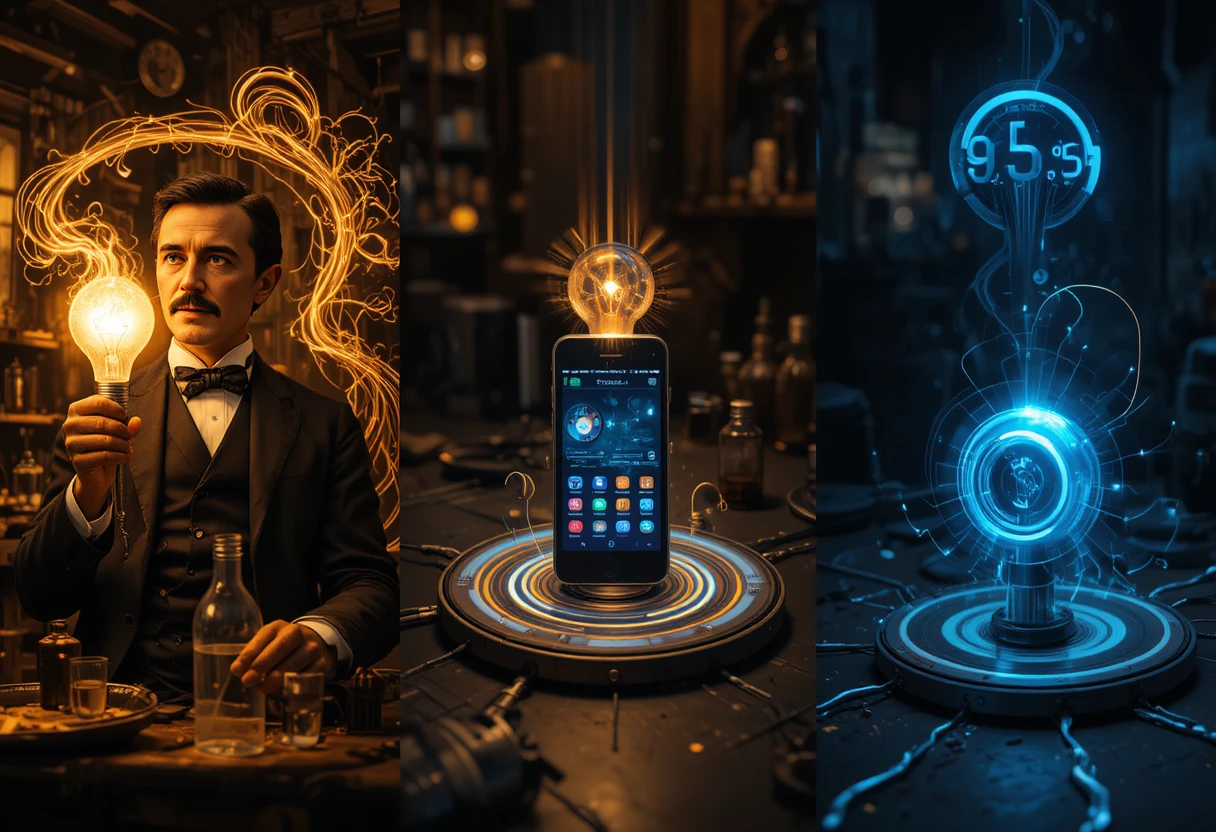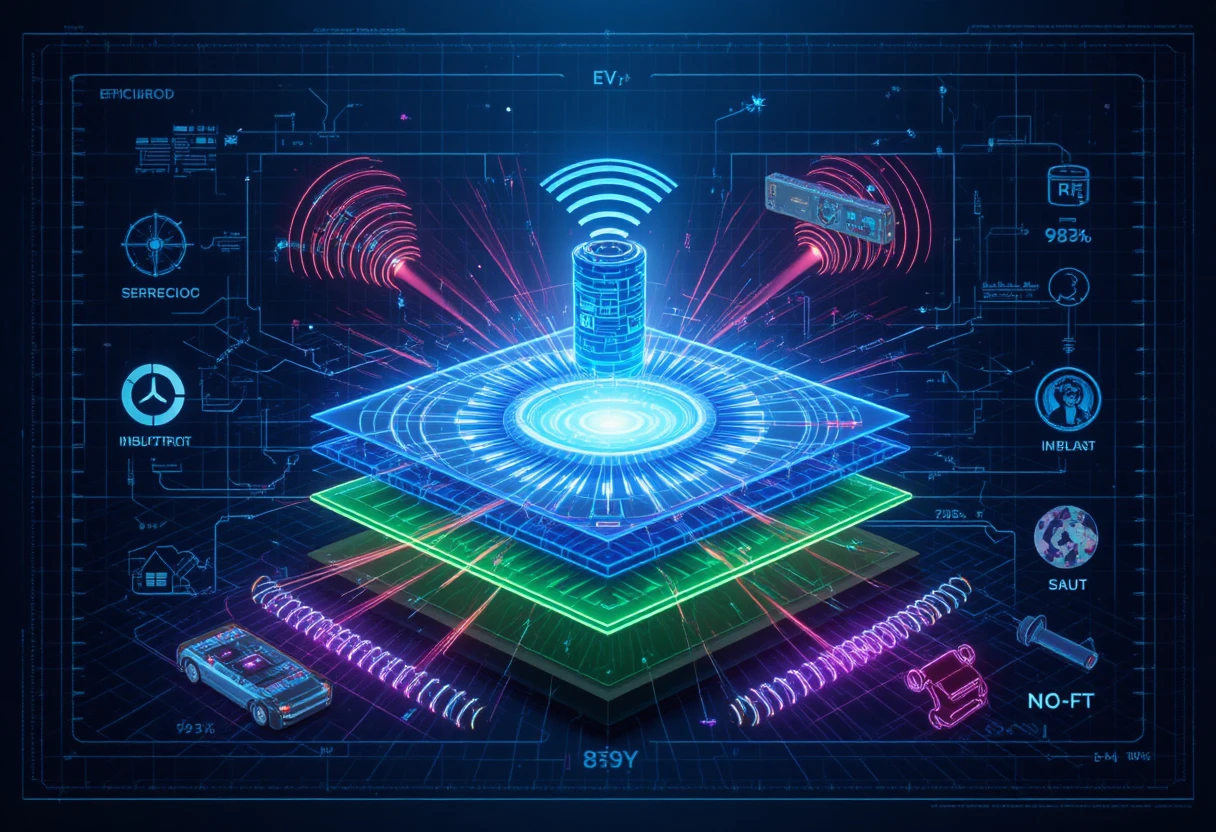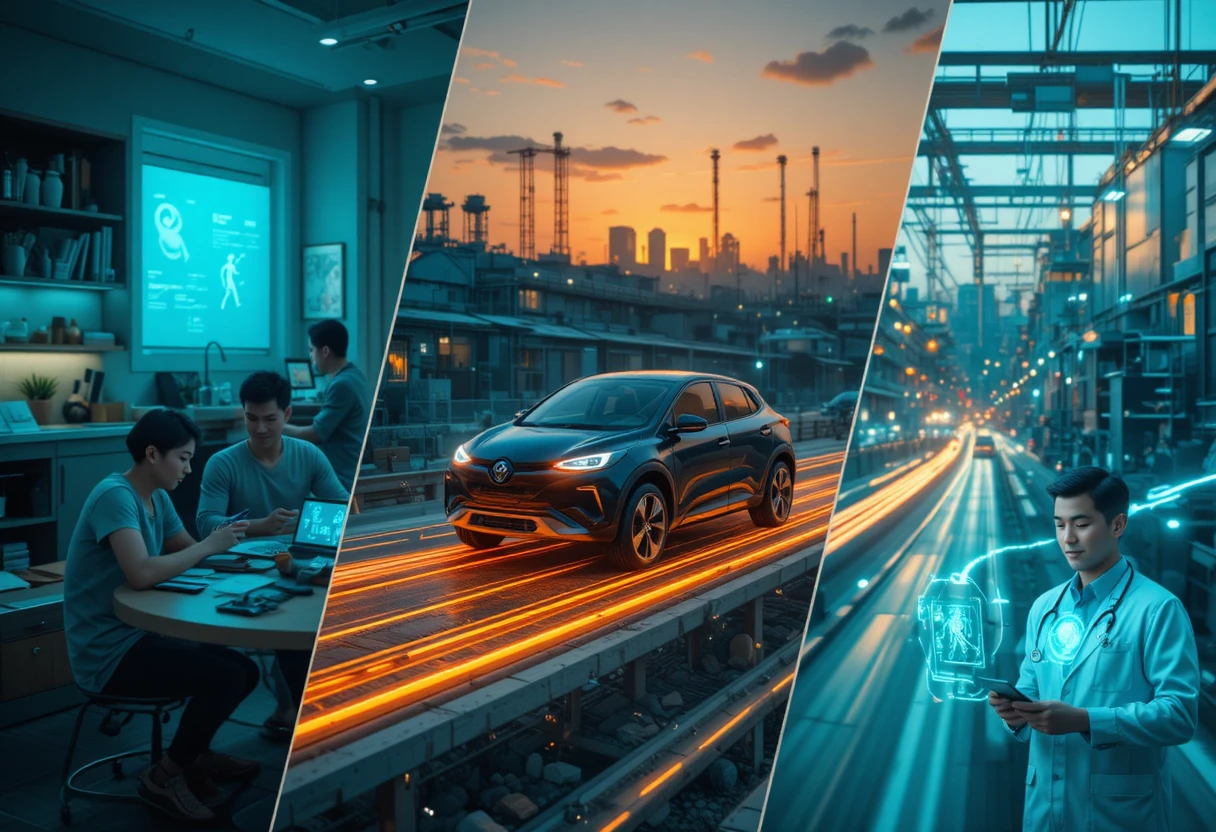Wireless Charging Innovations
In the electrified landscape of 2025, wireless charging has transcended its novelty status to become the invisible backbone of modern connectivity. With over 2 billion devices now wirelessly chargeable—spanning smartphones, wearables, laptops, and electric vehicles (EVs)—the global market has surged to $37.28 billion, up from $30.75 billion in 2024, and is barreling toward $172.17 billion by 2032 at a blistering 24.4% CAGR. Innovations like Qi2 25W, launched in July 2025, deliver 25W fast charging with magnetic alignment, while breakthroughs in resonant inductive coupling and radio frequency (RF) power transfer enable charging over meters, not millimeters. As of October 22, 2025, companies like Anker dominate with $2 billion in revenue, powering a ecosystem where EVs charge dynamically on highways and medical implants sustain life without surgery. This 3,000-word odyssey unpacks the historical arc, technological frontiers, market dynamics, sector-specific revolutions, hurdles, and 2030 visions—revealing wireless charging not as a convenience, but as the cordless catalyst for a sustainable, seamless future.
The Historical Arc: From Tesla’s Vision to Ubiquitous Power
Early Sparks: 1890s–2000s — Conceptual Foundations
Nikola Tesla’s 1891 experiments with alternating current laid the groundwork, envisioning a world of wireless energy transmission via resonant coils. By the 1920s, rudimentary inductive charging powered electric trains, but consumer applications lagged. The 1960s saw NASA’s microwave beaming for spacecraft, hinting at long-range potential, yet efficiency hovered at 10–20%, rendering it impractical.
The 1990s ignited momentum: Palm Pilots experimented with contactless pads, and MIT’s 2007 WiTricity demo—lighting a bulb 2 meters away via magnetic resonance—proved resonant coupling could achieve 90% efficiency over distance. Patents exploded, with filings rising 300% from 2010–2020, fueled by smartphone proliferation.
The Smartphone Ignition: 2010–2020 — Standardization Dawns
2012 marked the Qi standard launch by the Wireless Power Consortium (WPC), capping at 5W inductive charging for devices like Nokia Lumia 920. Apple’s 2017 iPhone X integrated Qi, spiking adoption; by 2018, 500 million Qi-certified units shipped annually. Samsung’s 2015 Galaxy S6 added reverse wireless charging, turning phones into hotspots.
Challenges persisted: heat buildup reduced efficiency to 70–80%, and misalignment demanded precise placement. Yet, by 2020, COVID-19 accelerated touchless tech, with 1 billion wireless-enabled devices worldwide.
2021–2025: Acceleration to Maturity
Post-pandemic, Qi v2.0 (2023) introduced 15W extended power profile, while MagSafe (2020) magnetized alignment for up to 20% faster charging. 2024’s Qi2 unified magnetic tech across brands, and July 2025’s Qi2 25W hit 25W speeds with 95% efficiency, reducing charge times from hours to minutes. Shipments hit 2,060 million units by 2025, with integrated solutions outpacing accessories 50:1. This era solidified wireless charging as essential, not elective.

Technological Frontiers: Beyond Induction
Inductive Power Transfer: The Workhorse Evolves
Inductive charging, dominant at 80% market share, uses close-proximity coils for up to 25W in Qi2. 2025 innovations include silicon carbide (SiC) inverters, boosting efficiency to 93% and slashing heat by 40%—vital for slim devices. Dynamic alignment via AI cameras auto-adjusts pads, eliminating misalignment losses.
For EVs, SAE J2954 standardizes 11 kW pads, with WiTricity’s Halo achieving 92% efficiency at 20 cm gap. Resonant variants extend range to 30 cm, enabling park-and-charge without precision parking.
Resonant and Magnetic Resonance: Distance Defiers
Magnetic resonance, pioneered by WiTricity, tunes coils to resonate at 85 kHz, transferring power over 2–3 meters at 90% efficiency. 2025’s Delta MOOVair for industrial AGVs (automated guided vehicles) delivers 10 kW mid-motion, slashing downtime by 60%.
Long-range resonant systems, like Powercast’s RF tech at CES 2025, beam watts across rooms via focused microwaves, powering IoT sensors indefinitely. Efficiency? Up to 80% at 10 feet, with adaptive beamforming avoiding obstacles.
RF and Emerging Waves: The Far-Reach Revolution
RF charging harnesses 2.4–5.8 GHz bands for truly cordless power, with 2025 pilots from Energous delivering 1W over 15 feet. Ultrasonic variants use sound waves for underwater or body-implant charging, while laser-based infrared (Wi-Charge) zaps 5W to drones at 30 feet.
Over-the-air (OTA) charging, blending RF and AI, promises ambient power harvesting from Wi-Fi routers, turning environments into perpetual chargers. By 2025, prototypes achieve 10 mW/cm², enough for wearables.
Multi-Device and Fast-Charge Synergies
Qi2’s magnetic ecosystem enables 3-in-1 pads charging phones, watches, and buds at 15–25W total, with foldable designs like Anker’s 2025 model shrinking to wallet-size. GaN (gallium nitride) tech halves pad size while doubling speed, and V2G (vehicle-to-grid) reciprocity lets EVs feed power back wirelessly.
These frontiers—95% efficient, multi-kW capable—herald a tangle-free tomorrow.

Market Dynamics: Giants, Growth, and Global Shifts
Leading Innovators: Anker to WiTricity
Anker reigns with $2B revenue (October 2024), its MagGo ecosystem shipping millions of Qi2-compatible pads. Belkin pushes enterprise with BoostCharge Pro, while Mophie excels in modular docks. In EVs, WiTricity (acquired by allies in 2025) partners with BMW and Ford for 11 kW pads, and Electreon rolls out dynamic road charging in Israel.
Startups shine: Powercast demos room-scale RF at CES 2025, and HEVO integrates solar-powered pads for curbside EV charging. Asia-Pacific commands 50% share, led by China’s 15 automaker commitments by 2025.
Growth Trajectories: Explosive Projections
Consumer electronics hold 26% share, but EVs propel 46.8% CAGR for wireless auto-charging, from $74M (2024) to $1.6B (2032). Overall shipments: 2.45B units (2025) to 4.75B (2030). Power banks hit $16.3B by 2028, blending wired/wireless.
Sustainability drives: Qi2 reduces e-waste by 30% via durable magnets, aligning with EU’s 2030 circular economy goals.
Regional Ripples: Asia Leads, West Innovates
Asia-Pacific (45% share) surges via Jio’s India pilots and South Korea’s 96% 5G synergy for OTA. North America’s Verizon-backed FWA integrates charging, while Europe’s €1B Quantum Flagship spills into RF R&D. Emerging markets like Africa leapfrog with MTN’s solar-wireless hubs.
This dynamo—fueled by patents (up 300%)—positions wireless as a $83.8B behemoth by 2033.
Sector-Specific Revolutions: Powering Progress
Consumer Electronics: Everyday Ubiquity
Smartphones claim 60% volume, with iPhone 17’s Qi2 charging 0–50% in 20 minutes. Wearables like Galaxy Watch 8 harvest ambient RF for all-day top-ups, and multi-device stands (e.g., Anker’s 2025 foldable) juice ecosystems at 20W. Furniture-embedded pads in IKEA’s 2025 line charge invisibly, boosting aesthetics and efficiency.
EVs and Mobility: Road to Seamless Range
Stationary pads from Qualcomm Halo hit 20 kW, adding 100 miles/hour; dynamic systems (Electreon’s Israel highways) charge at 60 mph, extending range infinitely. 2025 pilots: Tesla’s hinted inductive Cybertruck and 15 automakers’ commitments. For fleets, Delta’s MOOVair powers AGVs 24/7, cutting logistics costs 50%.
Industrial and Medical: Precision Power
IoT sensors draw microwatts from RF beacons, enabling smart factories with zero downtime. Medical: Pacemakers recharge via ultrasonic implants, slashing surgeries 80%; neurostimulators use resonant skin patches.
These revolutions—convenience in pockets, range on roads—amplify impact across 26% consumer to 53.5% EV CAGR.

Challenges: Navigating the Power Horizon
Efficiency lags (70–95% vs. wired’s 99%), with heat risking device damage—mitigated by GaN cooling but not eliminated. Costs: Pads at $50–$200, EV installs $5,000+, barrier for masses. Safety: EMF exposure prompts ICNIRP limits, but RF fears spur quantum-safe shielding.
Interoperability falters sans universal standards, though Qi2 unifies 90% devices. Infrastructure: EV wireless networks lag plugs, demanding $1.2T global investment. Solutions? Federated standards and subsidies via IRA Act extensions.
Visions to 2030: Ambient Energy Realized
By 2030, 4.75B shipments and $83.8B market herald ambient harvesting—devices sipping from Wi-Fi/5G grids at 50 mW. Dynamic EV roads span 10,000 km globally, with 130M EVs charging mid-drive. OTA for drones/robots: Wi-Charge fleets patrol warehouses autonomously.
Sustainability: Zero-waste coils and V2G reciprocity stabilize grids, cutting emissions 20%. Medical ubiquity: Implantable harvesters for billion-dollar bionics. Quantum boosts? Error-corrected qubits optimize resonance in pico-seconds.
This horizon—efficient, expansive, equitable—redefines power as pervasive.
Conclusion: Unleashing the Invisible Current
Wireless charging in 2025 is the quiet revolution, severing cords to liberate devices and dreams. From Qi2’s magnetic snap to resonant highways, innovations propel us toward a world where power flows unseen, efficiency reigns, and sustainability thrives. As 2B devices hum cordlessly today, tomorrow’s ambient grids promise a truly untethered existence—efficient, equitable, electrifying. The charge is on; the future is wireless.